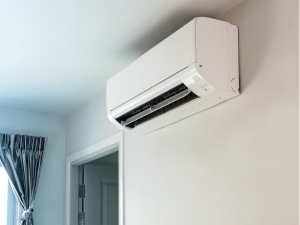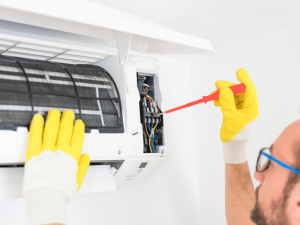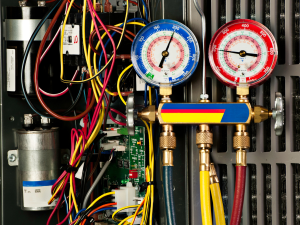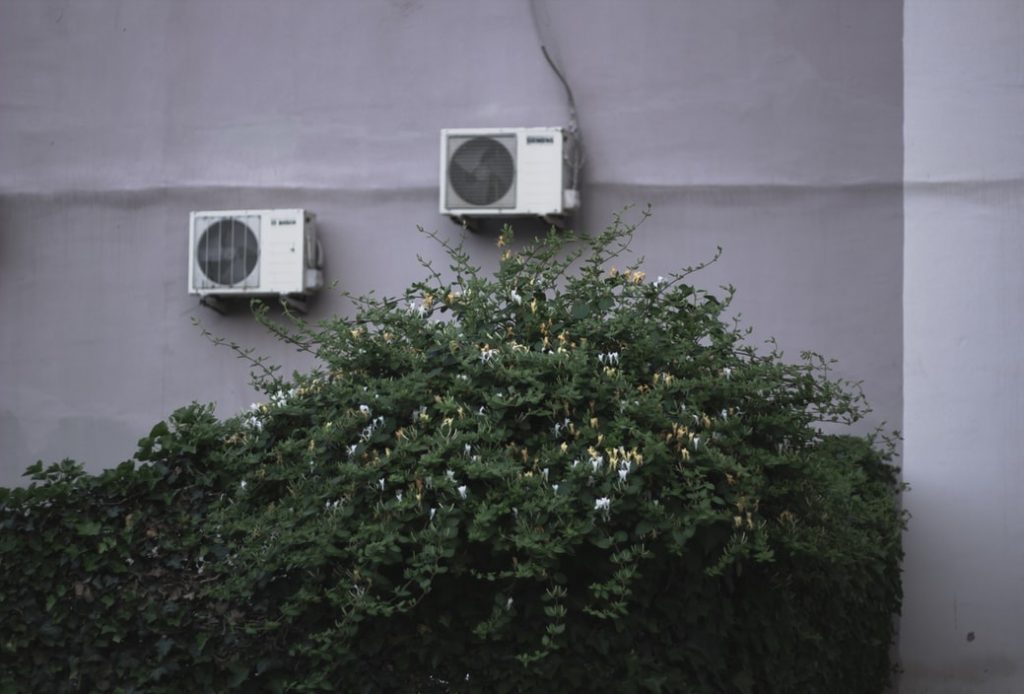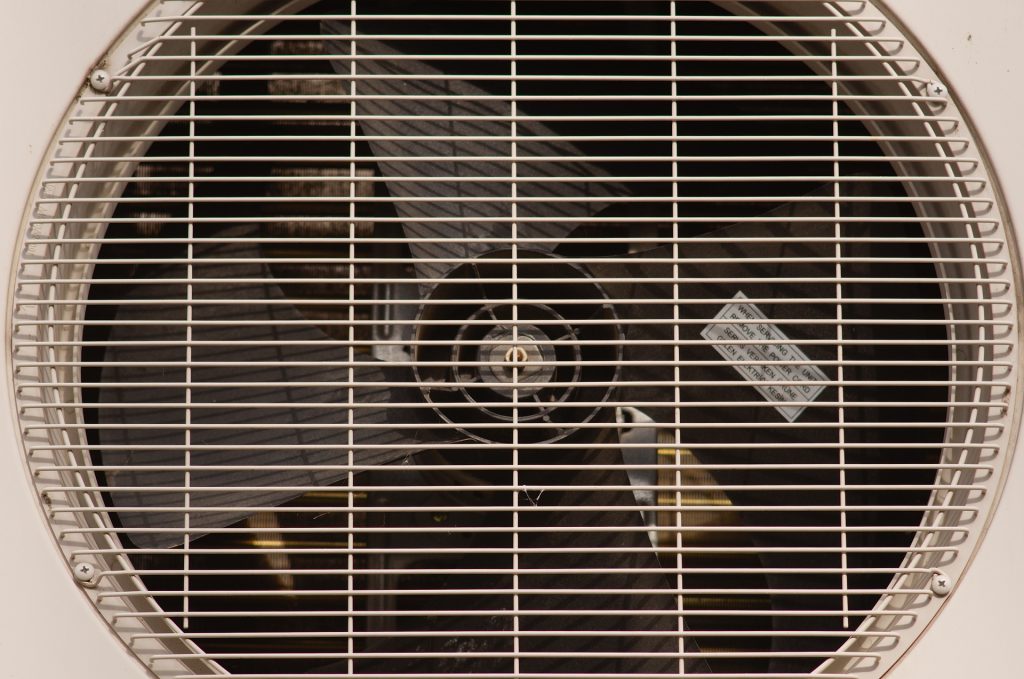Is your air conditioner acting strangely? Do you hear the familiar whirring even after you’ve switched it off, leaving you hot, confused, and facing a potentially hefty energy bill? Fear not! This isn’t a scene from a horror movie – it’s a typical air conditioner problem, and luckily, there are solutions.
This guide will equip you with the information to tackle a “zombie air conditioner” that keeps running when turned off. We’ll explore some potential reasons, offer simple troubleshooting steps, and tell you when to call a professional HVAC contractor.
Understanding Your Air Conditioner
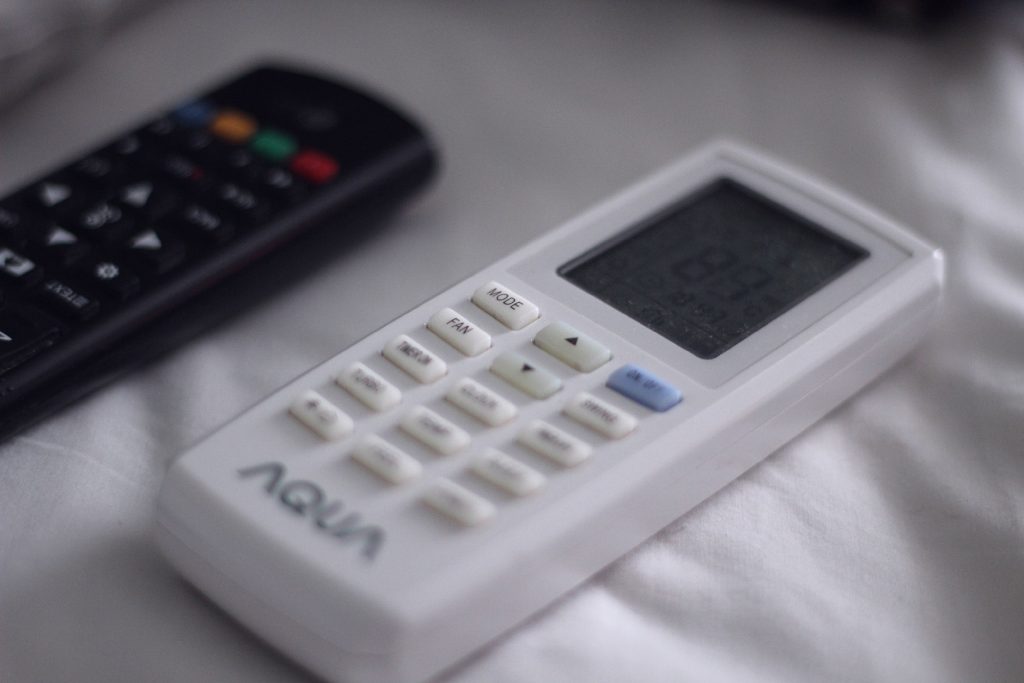
Air conditioners may seem like mysterious boxes that keep us cool, but let’s look inside for a simplified explanation. An air conditioner uses a refrigerant to take heat from your home’s air and release it outside. This cycle involves four main parts:
- Evaporator Coil: This indoor unit works like a giant sponge, soaking up heat from the air that flows over it. The refrigerant in the coil cools down by absorbing heat, which makes the air around it feel cooler.
- Condenser Coil: Located outdoors, this unit releases the heat the refrigerant absorbs inside the evaporator coil. A fan blows air over the coil to help disperse the heat outside.
- Compressor: This acts as the engine or heart of the air conditioner. The compressor pressurizes the refrigerant, enhancing its temperature and allowing it to absorb heat effectively in the evaporator coil.
- Thermostat: Your thermostat constantly monitors the room temperature and sends signals to the AC unit, turning the system on and off to maintain your desired comfort level.
Troubleshooting Your “Zombie Air Conditioner”
If your air conditioner keeps running when turned off (often referred to as short cycling), here are some common reasons:
- Faulty Thermostat: As mentioned earlier, the thermostat is crucial in regulating your AC’s operation. A malfunctioning thermostat can send incorrect signals, causing the AC to run continuously, even when your home is already cool. There are two main types of thermostats to consider:
- Mechanical Thermostats: These older thermostats use a dial or switch to adjust the temperature setting. A faulty dial or internal components within the thermostat can lead to malfunctioning.
- Digital Thermostats: These programmable thermostats offer more precise temperature control and scheduling options. However, digital components can malfunction, leading to inaccurate readings or issues with the control board.
- Electronic Control Board Issues: The electronic control board in your AC acts as its command center. It gets signals from the thermostat and manages components like the compressor, fan, and evaporator coil. A malfunction can happen for various reasons, such as a short circuit in the board. This disrupts the electricity flow and may cause the AC to run when it shouldn’t. Watch for signs like strange noises from the AC, sudden shutdowns, or issues adjusting the thermostat settings.
- Undersized Air Conditioner: An air conditioner that’s too small for your home can’t keep up with the cooling demand. This can cause it to run constantly without ever reaching the desired temperature. Several factors can contribute to an undersized AC unit, including:
- Square Footage: An AC unit sized for a smaller home will need help to effectively cool a more prominent space. Knowing how to calculate the correct size for your home’s air conditioner is crucial to avoid this issue.
- Climate: Homes in hotter climates may require a more powerful AC unit than those in milder regions.
- Sun Exposure: Homes with significant south-facing windows or those with limited shade will experience higher heat gain, requiring a more robust AC unit.
- Insulation: Proper insulation throughout your home helps to maintain cool air and reduces the workload on your AC. Poor insulation can lead to an undersized AC unit working overtime.
Is your AC unit running but not cooling your home? Learn how to fix it today.
Simple Checks Before Calling a Professional
Before you dive into more complex solutions, here are a few easy checks you can perform:
- Double-Check Your Thermostat Settings: Ensure your thermostat is set to “cool” and not left on “fan” by mistake. Check for low batteries or any malfunctions. For digital thermostats, verify that the programmed settings are correct and that no scheduling conflicts could cause the AC to run unexpectedly. If you have a thermostat problem, attempt resetting the air conditioner to its default settings.
- Clean Air Filters: A clogged air filter restricts airflow, making your AC work harder and less efficiently. Restricted airflow can also lead to the evaporator coil freezing up, further hindering performance. Regular cleaning (usually monthly) of your air filter can significantly improve performance and prevent unnecessary strain on the cooling system.
- Check for Blocked Airflow: In addition to dirty air filters, other factors can impede airflow. Look for obstructions around your AC’s indoor and outdoor units. Clear away furniture, plants, or debris that might restrict air intake or exhaust.
- Inspect for Frozen Coils: A frozen evaporator coil can prevent cool air from circulating and cause the AC to run continuously to achieve the desired temperature. This can happen due to a clogged air filter, low refrigerant levels, or a faulty thermostat. If you suspect a frozen coil, turn off the AC entirely and allow the ice to melt naturally. Once thawed, troubleshoot the underlying cause to prevent refreezing.
Listen for Unusual Noises: A properly functioning AC unit should generate a smooth, low hum. Unusual noises like grinding, clanging, or screeching could indicate loose parts, failing components, or a refrigerant leak. If you hear any concerning noises, shut down the AC and call a qualified HVAC professional or contractor for inspection.
When to Call an HVAC Specialist
If the simple checks don’t solve the problem, or if you’re uncomfortable dealing with electrical wiring, components, or potential refrigerant leaks, it’s time to call a licensed air conditioner specialist in Phoenix for repair. They have the expertise needed to accurately diagnose the issue and perform repairs to get your AC back in shape.
Here are some specific situations where calling an HVAC specialist is recommended:
- Complex Electrical Issues: While homeowners can do some troubleshooting steps, it’s best to leave anything related to electrical parts or the control board to a professional. HVAC experts are trained to handle electrical tasks safely and effectively.
- Refrigerant Leaks: Refrigerant is a vital component in the cooling process. A leak can significantly reduce efficiency and even damage your AC unit. Identifying and repairing refrigerant leaks requires specialized tools and expertise best handled by an HVAC professional.
Replacing Major Components: While homeowners can replace some parts like air filters, significant components like compressors or evaporator coils typically require professional installation. An HVAC specialist can guarantee a safe, efficient replacement for your AC.
Preventative Maintenance Tips
Professional maintenance can prevent future problems with your air conditioner and keep it running smoothly. Here are some quick tips to extend the lifespan and optimize the performance of your AC unit:
- Schedule Annual Checkups: A qualified technician can inspect your AC unit, identify potential issues before they become significant problems, and ensure optimal performance. Getting an annual check can save you money on repairs and energy bills.
- Clean or Replace Air Filters Regularly: Clean air filters are essential for efficient operation. The cleaning frequency depends on factors like pet ownership and dust levels in your home. Generally, cleaning monthly is recommended, and more frequently if you have pets or live in a dusty environment.
- Keep Outdoor Unit Clear: The outdoor condenser unit needs proper airflow. Trim back any bushes, shrubs, or vegetation encroaching on the unit. Aim for at least two feet of clearance around the condenser unit on all sides.
- Consider Upgrading Your Thermostat: Modern, programmable thermostats offer greater precision and scheduling options. This can help you optimize your AC usage and save on energy costs.
- Look for Signs of Wear and Tear: Regularly check your AC for signs of damage, such as rust, leaks, or loose parts. Fixing small issues quickly can prevent them from becoming bigger problems later on.
Note: You’re advised to replace/clean your air conditioner’s filters every month. Click for more in-depth information on how to troubleshoot your air conditioning system.
Additional Considerations for a Smoothly Running AC
For those seeking a deeper understanding of AC operation and troubleshooting, here are some additional considerations:
- Seal Leaks: Leaky ducts waste cool air. Fix them to avoid overworking your AC.
- Check Refrigerant: The right refrigerant level ensures optimal performance. Replenish if needed.
Consider Replacement: Older ACs are less efficient. Newer models can save you money. Choose high-EER models for maximum efficiency.
Conclusion
A continuously running air conditioner can be frustrating and costly. By understanding the potential causes, following our troubleshooting tips, and prioritizing preventative maintenance, you can keep your cool (literally) and avoid a summer meltdown. If your DIY efforts don’t solve the problem, remember that it’s best to contact an HVAC professional to ensure your comfort and prevent more damage to your AC unit.
For expert AC repair and maintenance services, contact American Home Water & Air today!



